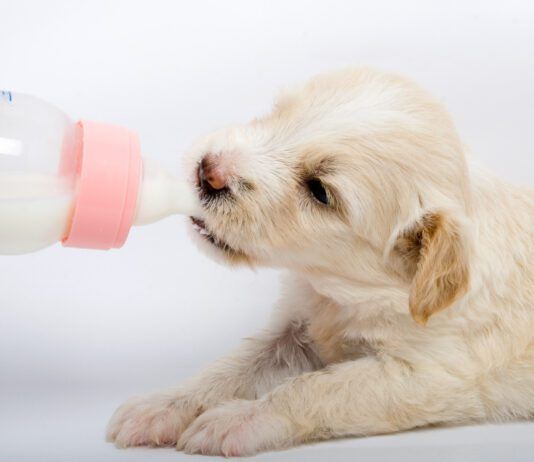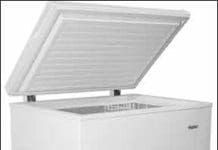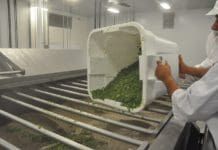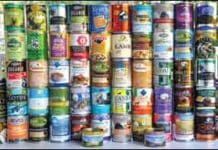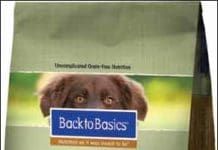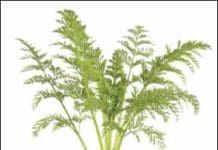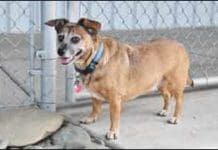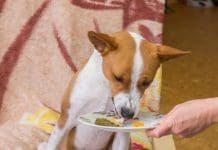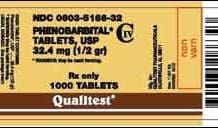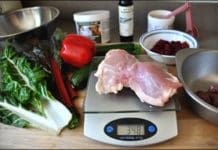Feeding a Home-Prepared Diet Economically
Feeding fresh food to your dogs can help make them healthy and happy, but it can also be expensive, particularly for those with large dogs. Whether you feed a completely homemade diet or just want to improve your dog’s diet by adding fresh foods, there are many ways to reduce costs. Here are some ideas to consider...
A Home-Prepared Dog Food Diet Recipe Critique
This is the debut of what we intend to be a regular feature in Whole Dog Journal: a detailed critique of a home-prepared diet. I will analyze diets that people feed their dogs and offer feedback and suggestions that might improve the nutritional value of the diet.
An Inside Look at How Canned Dog Food is Made
I've always wondered how wet dog food gets made but it took a long time to find out. It seems like it's more difficult for a journalist to get into a pet food cannery than into a factory that builds spy planes. So when Whole Dog Journal is asked to take a tour of a dog food manufacturing plant we jump at the opportunity. This article details how canned dog food is made at one plant. From the initial ingredient preparations, to the canning and cooking process and the QC and testing procedures along the way, this article captures it all. Included in this web-only feature are detailed photos taken by Whole Dog Journal during the plant tour. Be sure to click on each image to enlarge it.
Whole Dog Journal’s 2011 Canned Dog Food Review
Wet dog food is much more natural" for dogs to eat than dry kibble. Its moisture content is closer to that of meats
“Mass Market” Pet Food Companies Taking Aim at the Holistic Segment
As we have noted previously, the “natural/holistic” segment of the pet food market is experiencing more robust growth than any other segment. So, more and more “mass market” pet food makers are experimenting with new products developed to compete in this niche – although, in our opinion, only some of the products can walk the walk; many lack true commitment to the concept. One of the best indications of the company’s dedication to quality is the ingredients panel. Recently, we received a press release from Ainsworth Pet Nutrition of Meadville, Pennsylvania. The name is new, though the company is not. Ainsworth was organized from the core of Dad’s Pet Care, a family-owned business since 1933.
How to Determine What’s Special About a “Specialized” Dog Food
A special, perfect dog food for every dog? That’s what the pet food industry would like you to believe; that’s the direction taken by most of the large pet food makers – foods for tall dogs, small dogs, fat dogs, old dogs . . . you get the picture. The tactic must work, because all the biggest companies do it, and they wouldn’t make so many foods if they weren’t selling well. Dog owners should be aware, though, that there are actually only two types of products that provide legally defined “complete and balanced nutrition” for dogs. These are “adult maintenance” products formulated for adult dogs, and “growth and reproduction” (also known as “all life stages”) products formulated to meet the increased nutritional requirements of pregnant and nursing females and puppies.
Specialty Dog Food kings
I don’t think any pet food company has taken the “specialty diet” concept farther than Royal Canin, who has developed foods for dogs of every size, age, and condition, and even a few specific breed varieties. Here’s a list of its dry foods for toy and small breeds; no wonder people are confused about what to buy!
An Education in Specialty Dog Foods
It’s a very tempting concept – that a perfect food for every dog exists out there, somewhere. It must be tempting, because the pet food manufacturers keep increasing the number of products they formulate and market toward the owners of dogs of a progressively narrow description. Seriously – there are foods labeled for large breed seniors, and indoor toy puppies. There are foods that are supposedly just right for Spaniels, for goodness’ sakes! Decades ago, there was just dog food; eventually, versions of commercial foods for puppies were introduced to the market with great success – perhaps because of the introduction of commercial baby foods in the same historical period!
5 Steps to Enhancing Your Dog’s Store-Bought Dog Food
Whole Dog Journal readers have learned how to identify the best commercial foods when they shop for their dogs. But whether you feed dry kibble or canned food, even the best commercial diets can be improved with the addition of appropriate fresh foods. Keep the following things in mind when adding fresh foods to your dog's diet.
FDA Notifies Veterinarians of Phenobarbital Recall
On March 10, the U.S. Food and Drug Administration’s Center for Veterinary Medicine (CVM) advised veterinarians about a recall of a human drug, phenobarbital, which is used extra-label for pets. On February 5, Qualitest Pharmaceuticals recalled certain lots of product that was labeled as phenobarbital – but was actually hydrocodone/acetaminophen (Vicodin).
Food Elimination Trial: A Valuable Tool (When Done Correctly)
A valid food elimination trial for the purpose of confirming food hypersensitivity consists of three phases: elimination, challenge, and provocation. In the first (elimination) phase, the dog is fed a diet consisting of a single protein source and a single carbohydrate source. Both of these ingredients should be completely “novel” to the dog – foods he’s never eaten before. (Thirty years ago, lamb and rice was the go-to food elimination diet, because those ingredients were not yet widely available in commercial pet foods. Because the diet was novel, few dogs had developed allergies to those ingredients, and “lamb and rice” gained an unearned reputation as a “hypoallergenic” diet.
Home-Prepared Dog Food Diet Books
Over the past few months, I've read more than 30 books on homemade diets for dogs. Many offered recipes that were dangerously incomplete; a smaller number provided acceptable guidelines but were confusing, unduly restrictive, overly complicated, or had other issues that made me recommend them only with reservations. A few were good enough to recommend without reservation. This review is about the cream of the crop: three relatively new books (one is a new edition of an older book) whose authors have taken the time to analyze their recipes to ensure that they meet the latest nutritional guidelines established by the National Research Council (NRC).


